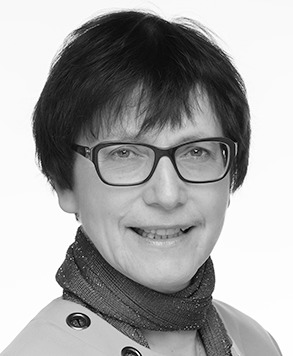
Dear Colleagues,
Burnout is estimated to afflict as many as 50% of physicians. Data suggest that one-third of medical students suffer from burnout and that this might increase to 50% during clerkship. It is more prevalent in disciplines such as emergency (52%), critical care (53%), and family medicine (50%).1 Factors that negatively affect the enjoyment of practice include budget constraints, increasing workloads, and system inefficiencies.1
Burnout is a distinct work-related syndrome of emotional exhaustion and chronic overstress, where the demand is perceived as exceeding individual resources. It is more likely found in work that involves extensive care of others. Stages include emotional exhaustion, depersonalization, and reduced personal accomplishment. Possible risk factors include high workload, younger age, sex (more prevalent in women), and lack of spousal support.1,2 There is evidence that, if not attended to, burnout might lead to poorer quality of care (eg, medical errors, riskier prescribing patterns) and might have a negative effect on the quality of caring (eg, communication, empathy). At the health system level, burnout affects morale and satisfaction among those in the profession, might accelerate permanent leave of the profession, and might negatively affect leadership in health care.1
When reviewing family medicine specifically, younger age and female sex1–3 are the main risk factors for burnout. The causes of burnout are a combination of factors in 5 areas: clinical (eg, medical complexity, increasing number of guidelines to follow [some with debatable relevance], short appointment time for complex patients); managerial (eg, decreased funding and resources, poor premises, managerial responsibilities); policing and complaints (eg, fear of litigation and complaints, a sense of feeling guilty until proven innocent); work force (difficulty recruiting and finding locums, some GPs and FPs moving to part-time work); and others (eg, negative opinions from the public, the media, and some decision makers).4 What is most disconcerting to me is the high percentage of FPs describing burnout who are considering leaving the medical profession altogether.2
Strategies to address and preferably prevent burnout require dedicated attention. If practised consistently,3–5 the following approaches might result in better practice organization, an earlier departure for home, and increased satisfaction at the end of the day: move from being an electronic health record hater to a “power user” (find a power-user colleague who can teach you some tips); document the minimally necessary data set (notes should meet billing, medicolegal, and continuity of care requirements—longer is not necessarily better); use electronic health record software to automate what you can (have your power-user colleague help you); make documentation a team sport (ask staff to contribute to documentation processes); pilot the use of a scribe; look for “broken records moments” (prepare written material or record videos so that they are ready for these moments; decide who will provide these to patients); huddle with your team; and embrace batch processing (eg, batch all laboratory results for review and delegate which results should be flagged and brought to your attention between appointments; make telephone calls at dedicated times).5
Family physicians who are now teachers also need to model prevention strategies for burnout so that medical students and residents learn to address this and do not lose sight of the joys of practice. Our First Five Years in Family Practice Committee and staff are creating tools to better support new FPs and residents in practice management, helping them have happy and successful practices.
Finally, individual resilience must be accompanied by paying attention to the systemic causes of burnout. We are dedicated to advocating on your behalf in this regard. I invite you to share your strategies for managing or preventing burnout at info@cfpc.ca.
Acknowledgments
I thank Cheri Nickel and Eric Mang for their assistance.
Footnotes
Cet article se trouve aussi en français à la page 479.
References
- 1.Gautam M. Physician burnout: building a culture of wellness and resiliency in medicine. Presented at: Open session with the AFMC Board at the 2018 Canadian Conference on Medical Education; 2018 Apr 28; Halifax, NS.. [Google Scholar]
- 2.Rabatin J, Williams E, Baier Manwell L, Schwartz MD, Brown RL, Linzer M. Predictors and outcomes of burnout in primary care physicians. J Prim Care Community Health. 2016;7(1):41–3. doi: 10.1177/2150131915607799. [DOI] [PMC free article] [PubMed] [Google Scholar]
- 3.Puffer JC, Knight HC, O’Neill TR, Rassolian M, Bazemore AW, Peterson LE, et al. Prevalence of burnout in board certified family physicians. J Am Board Fam Med. 2017;30(2):125–6. doi: 10.3122/jabfm.2017.02.160295. [DOI] [PubMed] [Google Scholar]
- 4.Lown M, Lewith J, Simon C, Peters D. Resilience: what is it, why do we need it, and can it help us? Br J Gen Pract. 2015;65(639):e708–10. doi: 10.3399/bjgp15X687133. [DOI] [PMC free article] [PubMed] [Google Scholar]
- 5.Drummond D. Eight ways to lower practice stress and get home sooner. Fam Pract Manag. 2015;22(6):13–8. [PubMed] [Google Scholar]


